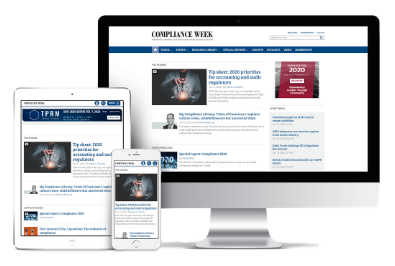Editor’s note: Jason Holt serves as global head of financial crimes compliance at U.K-based investment manager abrdn. He wrote the following piece for the International Compliance Association—a sister company to Compliance Week under the umbrella of Wilmington plc. The story has been adapted to fit CW style.
The International Compliance Association (ICA) is a professional membership and awarding body. ICA is the leading global provider of professional, certificated qualifications in anti-money laundering; governance, risk, and compliance; and financial crime prevention. ICA members are recognized globally for their commitment to best compliance practice and an enhanced professional reputation. To find out more, visit the ICA website.
The role of the money laundering reporting officer (MLRO) is diverse, exciting, and rewarding. Currently, I serve as global head of financial crimes compliance at abrdn, a leading investment manager.
I report to the chief risk officer; inevitably, from a second line of defense perspective, a lot of my time is spent coordinating with my risk and compliance colleagues. Outside of that, most of my time is spent working with business leaders, legal, human resources, and other colleagues aligned to financial crimes controls in our first line functions.
To be a successful MLRO, you need to be inquisitive and passionate about doing the right thing for the firm, customers, and society at large. You also need a large dollop of resilience and powers of persuasion, as not everyone sees things the same way or has the same priorities as you. Such a challenge can be helpful, as it can refine thinking and often results in better outcomes. Knowing where to draw the line and being able to explain why that’s where it needs to be, plus the courage to stick to that boundary, are also key skills of an MLRO.
Daily responsibilities include ensuring we collect and collate, review, understand, and react appropriately to the management information we hold and produce, as well as reviewing policies and standards to ensure they are fit for purpose and aligned to regulatory risk (including being proportionate to the risks run by our business). Such risks include those for transaction monitoring and customer/asset screening; knowing your customer and customer due diligence, including onboarding and refresh; and investigations and reporting.
Other crucial MLRO tasks involve gathering management information, including key risk and performance indicators; looking at our risk appetite measures and ensuring we manage these to tolerance; reviewing feedback on policies and standards; reviewing thresholds, inputs, and parameters for our tools; plus looking at new ways to be more efficient and effective with our resources. Business change is an ever constant, so working to ensure our products and services minimize risk without causing unnecessary friction to our customers is also an important activity.
“To be a successful MLRO, you need to be inquisitive and passionate about doing the right thing for the firm, customers, and society at large.”
Jason Holt, Global Head of Financial Crimes Compliance, abrdn
Financial crime is a continuously evolving function, so meetings inevitably vary. Now, I am spending quite a bit of time meeting to discuss enhancements to our transaction monitoring systems, business change, and coordinating with colleagues in the first line on specific clients. There are also regular board and associated governance meetings, one-to-ones with my own team, and meetings with colleagues in the United Kingdom and around the world.
An integral aspect of the MLRO function is how it interacts with external regulators. This can be done in a range of different ways, the most obvious being reactive, for example through their examinations of the anti-money laundering (AML) program. Of course, in the United Kingdom and many other countries, an annual return is also required.
Other more proactive measures of regulatory engagement might be to send the MLRO report to the regulators. In addition to this, I believe engaging in proactive dialogue is important—not only to follow the Financial Conduct Authority’s Principle 11 but also seeking to have regular meetings with key regulators can be useful to keep them up to date on changes we are putting in place (although this may not always be practical or necessary). In addition, I always try and take advantage of the various forums that exist to build a relationship with regulators and understanding of their general direction of travel around the world.
In my current role, to keep up to date with regulatory developments, we use a tool provided by a vendor, but I also use various alerts (e.g., Google and Mondaq) which are great at keeping abreast of global changes, developments, and legal interpretations. The Financial Action Task Force is also helpful, along with the usual Joint Money Laundering Steering Group and of course industry bodies such as the Investment Association or U.K. Finance.
Finally, I recommend participating in industry events and conferences. And, where applicable, take new professional qualifications to expand your knowledge and expertise.
For those looking to move into the MLRO role, there are certainly some key areas of experience required. Depending on the complexity of the business you are working in, or looking to move into, this includes experience of the products and services the firm operates and what these give to customers as well as the risks they present. You also need strong knowledge of the law and regulations and what they are designed to achieve, as well as experience writing reports for the C-suite and creating policies and standards. Depending on the size of the team, people management experience may also be critical.
A key piece of advice I would give to any aspiring MLRO is to get experience of all the key areas of financial crime compliance first; it is beneficial to have this to inform your daily decisions in the role. I started my career as a financial adviser, then moved to law enforcement, where I became a specialist financial investigator working at New Scotland Yard. I returned to the financial services industry in 2002 and worked mainly at investment and global banks, including as global head of AML at Barclays; head of financial crimes compliance for Europe, Middle East, and Africa (EMEA) at JPMorgan; and international head of financial crime compliance at Bank of America Merrill Lynch. More recently, I headed up the EMEA region for a consulting firm before moving into my current position.
My final key piece of advice for prospective MLROs is to think carefully about the responsibility and potential liabilities you have if you get things wrong. We all make mistakes, but the stakes are high in this job. You need to be comfortable with this and, even ideally, enthused by this important responsibility.











No comments yet